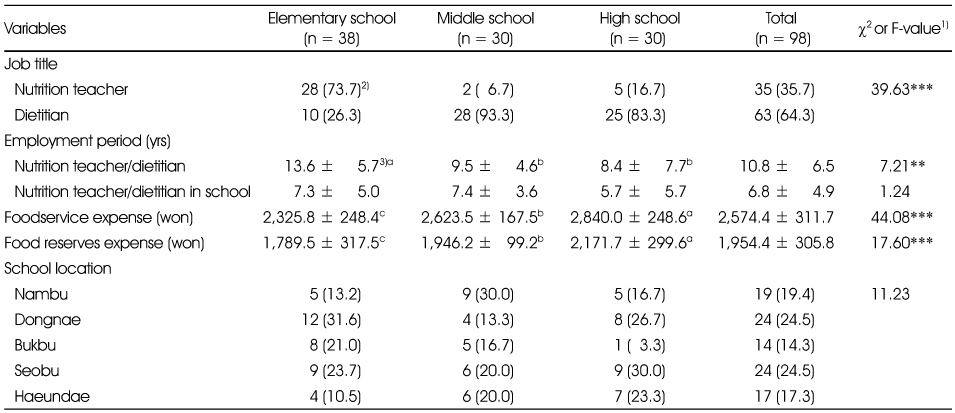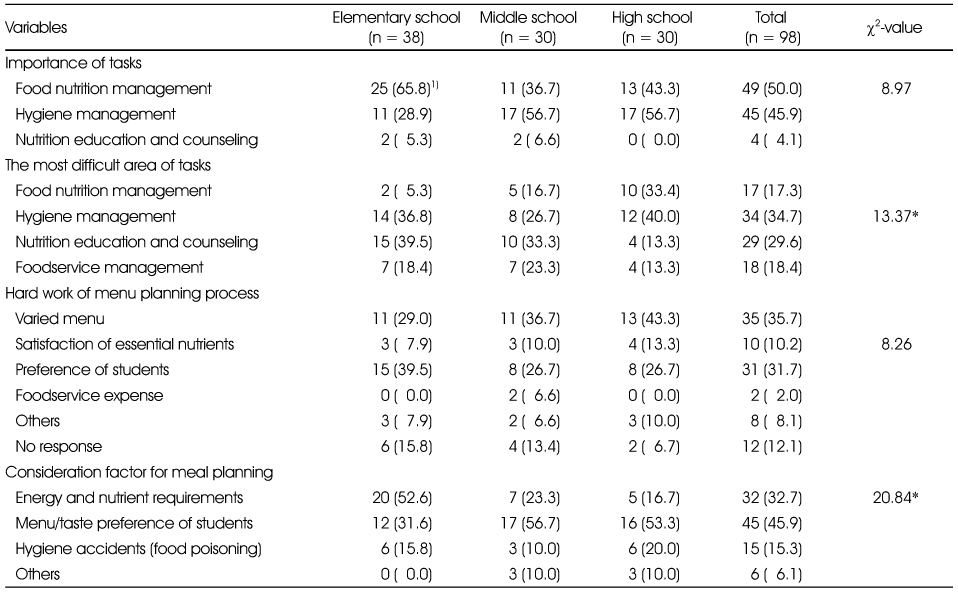The use Frequency and Amount of Food Sources of Sodium and Knowledge Requirement, and Job Satisfaction of Dietitians and Nutrition Teachers according to the School Types in Busan
Article information
Abstract
Objectives
To investigate the use frequency and amount of food sources of sodium and knowledge requirement, and job satisfaction with school food services according to the school types in Busan.
Methods
A total of 98 schools were surveyed and knowledge requirement and job satisfaction were assessed using a questionnaire. In addition, the use frequency and amount of food sources of sodium for 10 school days were examined.
Results
The response rate of the most difficult area among dietitians' tasks was significantly high in 'nutrition education and counseling' for elementary schools and 'hygiene management' for high schools (p < .05). The response rate of the factors to be considered in meal planning was significantly high in 'energy and nutrients requirement' for elementary schools and 'menu/taste preference of students' for middle and high schools (p < .05). The response rate of whether school food services affect health and eating habits of students or not was significant high in 'very helpful' for elementary schools (p < .001). The average sodium contents in the meals of elementary, middle and high schools was 1981.4 mg/meal/person/day, 1867.3 mg/meal/person/day and 1,329.9 mg/meal/person/day, respectively. For foods in highest sodium, Kimchi, Oribulgogi, and Kare rice were ranked 1st, 2nd and 3rd respectively. The main reason for not providing the fruits was 'price' among all groups. The knowledge requirement such as 'nutrition and menu management', 'nutrition education', and 'nutrition counseling' was significantly higher in elementary school compared with middle and high school (p < .001, p < .01, and p < .01 respectively). The dietitians and nutrition teachers of elementary schools have a higher job satisfaction compared with those of middle schools (p < .01). The job satisfaction was positively correlated with knowledge requirement of dietitians and nutrition teachers of elementary and middle schools.
Conclusions
The results suggest that developing dietitians' education program about knowledge requirement contribute to increasing the school food service and job satisfaction in elementary and middle schools.
Notes
This research was supported by a grant from the Health Fellowship Foundation.








